About this detail of the Tiger
The Tiger's gun recoiled by sliding backwards into a lubricated metal sleeve. If the outer part of the gun were chipped by shrapnel, the recoil would have dragged this protrusion into the sleeve, possibly jamming the gun. Therefore a protective sleeve was bolted to the front of the mantlet, covering the relevant portion of the gun.
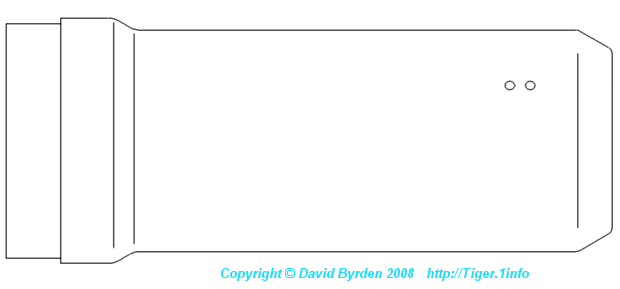
This is the protective sleeve.
These are the dimensions of the sleeve. This diagram is a view from below; there is a drain hole at the left, and a pair of countersunk screws at the right. I must thank Saúl Garcia for pointing this out.
The sleeve was for the most part only 27.5mm thick. These are the internal dimensions. The sleeve did not touch the gun; the hole in the end of the sleeve had a radius of 122mm, while the corresponding portion of the gun had a 114mm radius, leaving 8mm clearance.
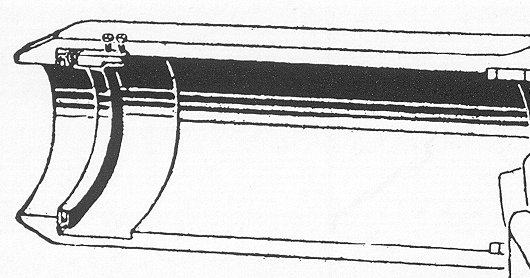
Very soon after it was designed, and before it entered service, the Tiger was modified for deep wading. A circular rubber seal was added to the end of the sleeve. A length of the sleeve, near the end, was now bored out to 278mm diameter, making room for this seal and its holders. This diagram from the Turret Manual shows the rubber seal. It is the ring at the left, in the bored-out end of the sleeve. One of the holders is drawn at the top.
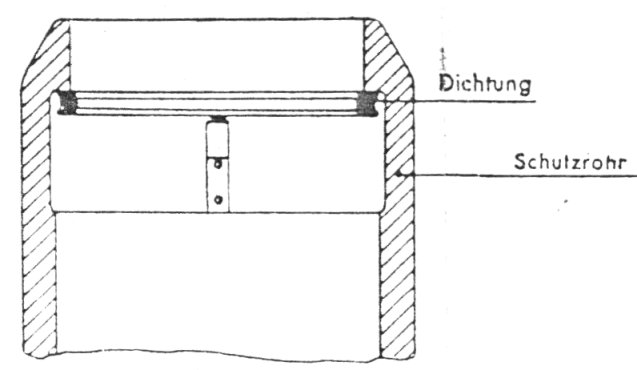
The manual provides this sectional diagram of the end of the sleeve, showing the same items. There were three holders, spaced evenly around the sleeve.
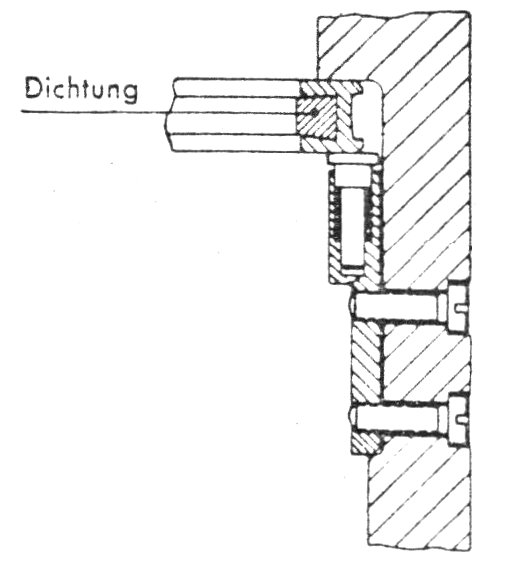
Also from the Turret Manual, this is a detailed diagram of a holder for the seal. We can see that the rubber ring, gripping the gun tightly, was seated in a rigid metal frame. The frame was mounted loose in the sleeve, allowing the gun to diverge about 5mm from the center line without damaging it. In each holder, a spring plunger pushed the frame forwards against the rim of the sleeve.
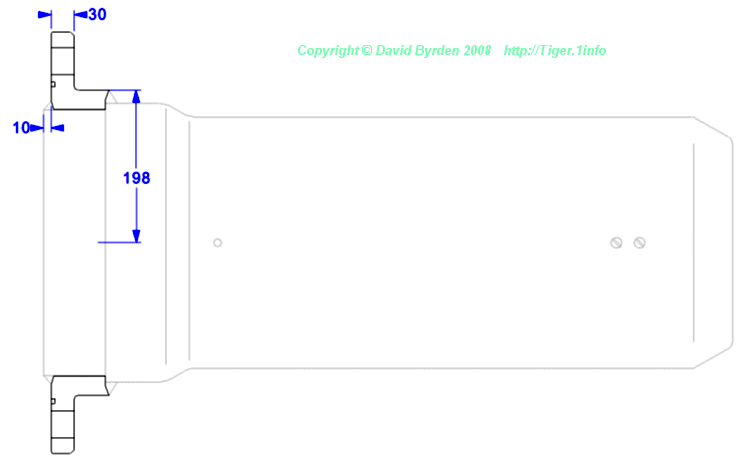
A flange was welded to the base of the sleeve. This diagram is a section through the flange.
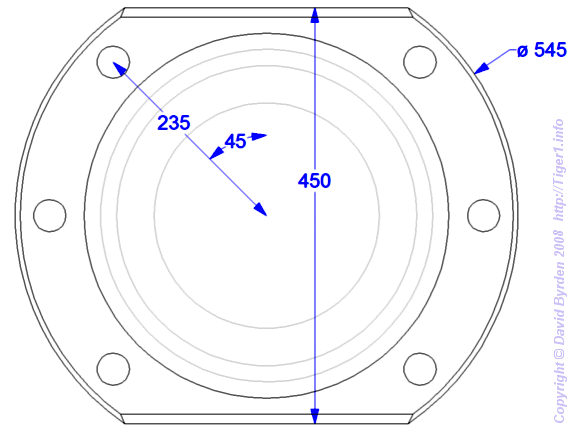
The flange had 6 bolt holes for fixing the sleeve to the mantlet.
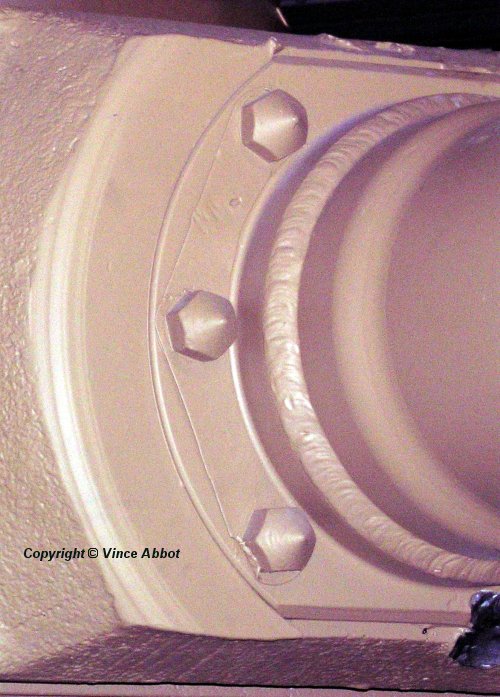
This photograph shows a sleeve bolted into a mantlet. The bolts were unusually heavy and cone-headed, to make them resistant to impacts.
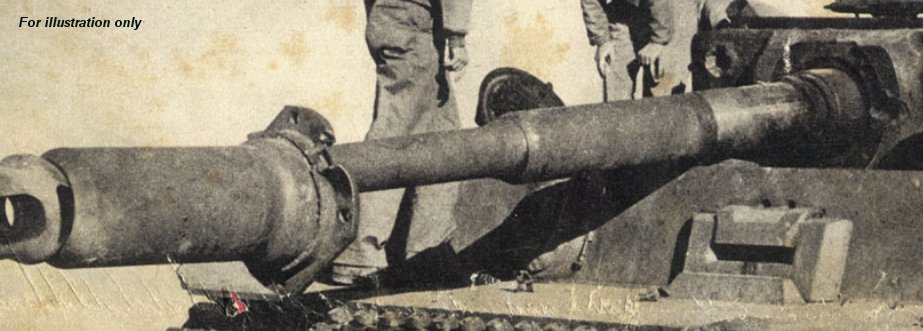
This photograph shows a Tiger captured in Tunisia. The sleeve is loose and has slid to the end of the gun. This damage could not possibly have been caused by the use of a demolition charge inside the turret, because the gun and mantlet leave very little room for blast to reach the sleeve. In fact, as can be seen from the damage to it, this sleeve was hit by a transverse shot that fractured all six of its bolts.
The fixed lubricated sleeve that carries the sliding gun, can be seen protruding from the mantlet. Notice that the part of the gun that enters this sleeve, is unpainted.
[2] Survey of Tiger 251113 at Vimoutiers, by Jean-Charles Breucque
[3] Survey of Tiger 250031 at Koblenz, by Hilary Louis Doyle
[4] Survey of Tiger 251113, at Vimoutiers, by Hilary Louis Doyle

